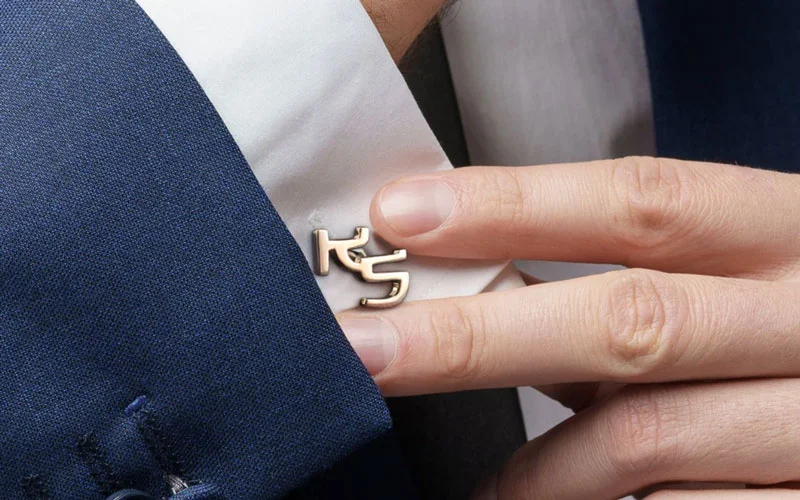There is no uniform standard for the best metal for cufflinks, but it depends on the wearer’s preference and the different use occasions. Cufflinks are not only functional accessories, but also essential accessories that show personal taste. Therefore, when choosing the material to make them, it is necessary to consider the appearance, durability, cost, and maintenance requirements.
Different metals give cufflinks different textures and styles. Each metal has unique charm and characteristics, from modern and simple stainless steel to classic and luxurious gold. Whether it is to add color to daily wear or to show taste on essential occasions, choosing the suitable metal can make cufflinks better express the wearer’s personality and aesthetics. Understanding the advantages and disadvantages of various metals will help you find the most suitable cufflink material among many options.
A List of Best Metal for Cufflinks
| Metal | Advantages | Disadvantages |
| Stainless Steel | Known for its excellent corrosion and oxidation resistance, stainless steel is highly durable and easy to maintain. It has a high gloss and is affordably priced, making it ideal for daily wear. | Compared to precious metals like gold or platinum, stainless steel may feel less luxurious, lacking the prestige for high-end occasions. |
| Brass | Brass has a warm color and a unique vintage charm. It is easy to work with and engrave, making it suitable for creating cufflinks with intricate designs that reflect individual style. | Brass is prone to oxidation, which can cause discoloration. Regular maintenance is required to preserve its luster and color. Additionally, brass is relatively soft and can be scratched easily. |
| Silver | Silver cufflinks are favored for their high gloss and premium feel, making them suitable for formal occasions. Silver also has natural antibacterial properties, providing comfortable wear and versatile pairing with various outfits. | Silver tarnishes easily, darkening over time, and requires frequent polishing to maintain its beautiful luster. Silver is also soft and prone to scratches. |
| Gold | Gold cufflinks exude luxury, symbolizing status and wealth, making them perfect for important events or as precious gifts. Gold is resistant to oxidation and holds its value well, maintaining its rich color over time. | Gold is expensive and relatively soft, making it susceptible to scratches and dents. Over time, maintenance or repair may be needed to keep it looking its best. |
| Rose Gold | Rose gold is known for its unique color and fashionable appeal, exuding a romantic vibe. It is ideal for special occasions or as a personalized gift, and has good durability to maintain its charming luster over time. | Rose gold is relatively expensive, and its color may change over time with wear. Regular cleaning and maintenance are necessary to keep it in optimal condition. |
| Titanium | Titanium is renowned for being ultra-lightweight and extremely durable, with excellent corrosion and scratch resistance. It is also hypoallergenic, making it ideal for people with sensitive skin. | Titanium is difficult to work with, leading to higher production costs. Although durable, creating intricate designs with titanium is challenging, and the selection of titanium cufflinks on the market is relatively limited. |
| Platinum
|
Platinum, as a rare metal, symbolizes exceptional durability and luxury, with a never-fading color. It is perfect for the high-end market, and wearing platinum cufflinks showcases extraordinary taste and status, making them highly collectible. | Platinum is very expensive and relatively soft, making it prone to scratches or deformation. Repairing platinum can be difficult and costly, so careful wear and maintenance are needed to avoid damage. |
From the perspective of professional cufflink manufacturers, choosing the suitable metal to make cufflinks affects the product’s quality and aesthetics. It is also directly related to market positioning and target customer groups. Stainless steel and brass are common choices for manufacturers because they are relatively low in cost, easy to process, and suitable for large-scale production.
Brass is a popular material for cufflinks due to its warm color and vintage charm. It is easy to work with and ideal for creating intricate designs. When processing brass, manufacturers often use silicon carbide cutting discs or other suitable cutting disc, which are known for their durability and ability to handle softer metals like brass efficiently. However, brass cufflinks require regular maintenance to prevent oxidation and maintain their luster, as brass is prone to discoloration over time.
In addition, these two metals are widely in demand in the market, especially for cufflinks series for daily wear. Precious metals such as gold and platinum are more used in high-end customized products to meet the needs of customers who pursue luxury and uniqueness. Because of their value and rarity, precious metal cufflinks are usually launched in limited edition or customized form, which can attract high-end consumers and enhance the brand’s high-end image.

We will fully understand customer needs and market trends in fierce market competition to select suitable metal materials. By flexibly using different metals, we can meet the needs of consumers at various levels. While expanding market share, we can enhance the brand’s market influence and reputation. At the same time, reasonable metal selection can also optimize production costs, improve product cost performance, and provide customers with better product choices.















